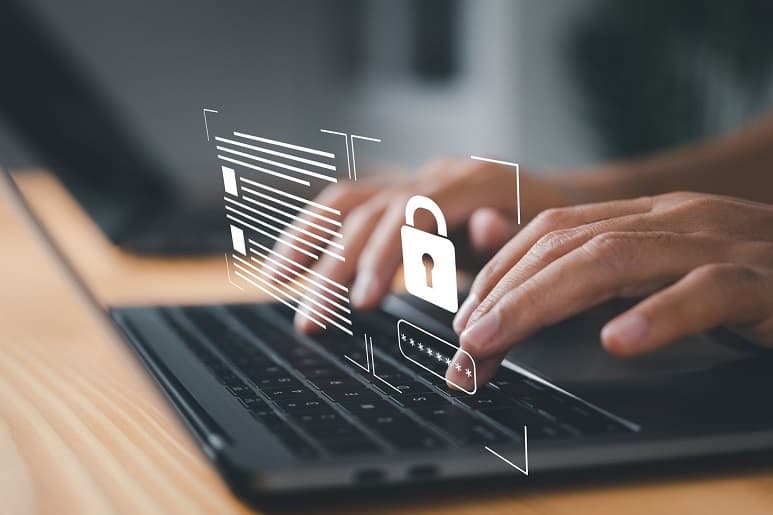The hybrid work model combines elements of traditional and remote workplaces. It’s grown in popularity thanks to its many advantages. It gives employees a better work-life balance because it adds a layer of flexibility, so they don’t have to be in the office all the time. It also allows employees to save money on transportation. However, while the hybrid workplace has pluses, organizations must rely more on technology.
There’s nothing inherently wrong with relying on technology. However, the issue is that the threat of cybersecurity is increasing. It means businesses and organizations relying on information technology (IT) and the Internet of Things (IoT) are more vulnerable to cyberattacks.
A data breach of any magnitude can be disastrous for any organization, resulting in reputational and financial loss. That’s why a data loss prevention (DLP) strategy is essential. You could assign your IT team to develop one for you, or you can outsource the expertise of firms like Next DLP for the best results.
This guide will detail some of the threats to data protection and tips to prevent data loss.

Common Threats To Data Security
There are several threats that businesses must look out for and defend themselves against. Knowing these in advance can help you develop a solid DLP strategy. Here’s a list of some of those threats.
- Man-in-the-middle (MitM) attack – This is an attack wherein a hacker intercepts data between two parties. Typically, hackers intercept data in transit. Such attacks are common when employees connect to unprotected or public networks. As a result, it’s always a good idea to encourage your remote workers to use private, secure networks.
- Phishing – Phishing scams are among the most prevalent ways hackers infiltrate your systems. If, for example, a hacker sends an email containing a corrupted or malicious file and an unsuspecting employee opens it, it may gain access to and corrupt your system without your knowledge. This is why it’s critical not to open suspicious emails or websites.
- Malicious Applications – Many businesses and organizations use different types of software for their daily operations. However, most are integrated with third-party applications, which can request access to specific data, which may or may not be private. This can raise security concerns.
Employees must know the importance of proper interaction with your company’s IT infrastructure. That’s why having cybersecurity training for employees is important.
Tips For Preventing Data Loss
Here are various effective ways you can mitigate the risks of data loss:
1. Classify Sensitive Data
What constitutes ‘sensitive data’ varies by organization. What matters is that this data doesn’t end up in the hands of cybercriminals who could exploit it.
You should also know where this data is stored and devise a method to secure it. It’s easier to design a data protection system if your data sets are classified on a scale of sensitivity or importance. This way, the principle of least privilege will be much easier to enforce. Priority must be given to critical assets.
2. Monitor Access
To protect your sensitive data, you must first understand who has access to it and how they use it.
Using access controls to limit data access to specific individuals would be prudent. This ensures that employees only get their hands on information required to complete their tasks. Because your teams can and will access cloud systems and servers remotely, access controls are critical in the hybrid workplace. You must institute them to limit the incidence of insider threats.
3. Create Stronger Passwords
Your employees have accounts through which they do their work. Chances are, most of them don’t change their passwords regularly. There’s also a chance that some employees have weak passwords.
One of the common ways hackers access systems is by compromising credentials. So, it’d be best to invest in a password management tool that’ll assist employees in managing their credentials. They won’t have to worry about forgetting passwords; they’ll also be able to reset them regularly without a hassle.
4. Use Virtual Private Network (VPN)
Encourage your employees to use a VPN when remotely accessing your systems. This tool allows encrypted communications between your device and a server. This provides an additional layer of security, making it more difficult for potential cybercriminals to steal or intercept data in transit or at rest. There are numerous VPNs on the market, so it’s a matter of selecting one that works for you. However, look for one that supports multi-factor authentication (MFA) for added security.
5. Train Employees
Because your employees interact with your systems daily, it’s worthwhile to consider investing in training them on the importance of data security and management. This way, they become assets rather than a liability to your overall data protection efforts. They must be taught how to recognize phishing scams, use the internet wisely, and securely share files, among other things. This training also holds them accountable for their action or inaction.
6. Establish and Enforce Data Management Policies
Some companies in a hybrid setup may provide employees with devices that allow them to work remotely. However, it’s common for employees to use their personal equipment for work.
To work, employees must set up their networks. The fact that they can access company data using their devices puts the company or organization at risk. This is because it’s impossible to tell how secure someone’s connection or network is.
Providing employees with their devices is usually a safer bet because they may come with installed data management systems. Thus, it’s always wise to encourage your employees to use company-issued devices.
But it’s also important to establish data management policies that can and should be available to all your employees. If they know how they’re expected to interact with the company’s IT infrastructure, data loss can be further prevented.
7. Keep Software Up To Date
Vendors typically roll out service updates regularly. So, you must ensure that your systems have the most up-to-date security patches, as they add an extra layer of defense.
The list above is a great starting point to ensure data security in your company.
Conclusion
Although not all industries can hybridize their work models, those that can have already embraced the change. But whatever the case, it’s important to prioritize data security.
Today’s organizations rely heavily on data as it helps them better understand their markets and carry out their operations more efficiently. That’s why having a data loss prevention plan is critical. Hopefully, the above guide has shed some light on how to carry it out successfully.
